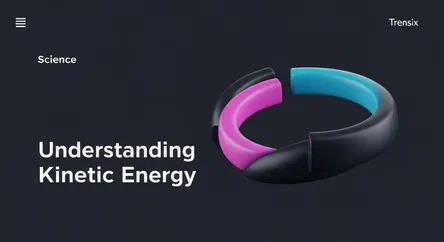Science
Understanding Kinetic Energy

An introduction to kinetic energy, the energy of motion. Learn how it's harnessed in renewable technologies and its role in our everyday lives.
What is it?
Kinetic energy is the energy an object possesses due to its motion. Any object that is moving, from a rolling ball to a planet in orbit, has kinetic energy. This form of energy is dependent on two variables: the mass of the object and its speed. The faster an object moves or the more mass it has, the more kinetic energy it possesses. Kinetic energy is often discussed alongside potential energy, which is the stored energy an object has due to its position or state. For example, water at the top of a waterfall has potential energy that converts to kinetic energy as it falls.
Why is it trending?
The concept of kinetic energy is trending due to its critical role in the development of renewable energy technologies. As the world seeks sustainable alternatives to fossil fuels, harnessing kinetic energy has become a major focus. Wind turbines capture the kinetic energy of the wind to generate electricity. Similarly, hydropower plants utilize the kinetic energy of flowing water to power turbines. These technologies are at the forefront of the green energy revolution, making kinetic energy a highly relevant and discussed topic in science and technology.
How does it affect people?
Kinetic energy is fundamental to daily life. The simple act of walking or driving a car involves your body or vehicle having kinetic energy. Its principles are crucial in transportation for vehicle performance and safety design, as the energy in a collision is kinetic. Beyond personal movement, the electricity powering homes and cities is often generated by converting kinetic energy from sources like wind and water into electrical energy. It is also the basis for countless recreational activities and sports, from cycling to rollercoasters.